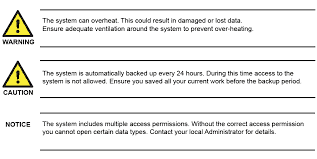US documentation standards are very similar to the standards set out for EU documentation. Creating documentation that is compliant with EU standards goes a long way towards documentation compliance in US markets. However for full compliance in the US markets, you need to understand how standards are created and what the key elements you need consider.
So how do you make your products documentation compliant with US regulations?
What are the US documentation standards?
In the US, initially laws are passed by the Senate. These laws are then acted upon by various government agencies. There is a different government agency for each industry or group of industries. Finally, local regulations and laws are set on a state-by-state level.
The largest government agency that provides a baseline for a lot of the other agencies and hence and good benchmark for documentation compliance, is the Consumer Product Safety Commission (CPSC).
The CPSC sets out documentation compliance using the same standards that are adopted in the EU, specifically the IEC 82079-1 Preparation of instructions for use standard. However there are additional standards that you need to be aware of, for example ISO/IEC Guide 37:2012 – Instructions for use of products by consumers and ANSI Z536.6 Product Safety Information in Product Manuals, Instructions, and Other Collateral Materials.
Case law and documentation
US documentation compliance standards are also defined by case law. This is where a legal action has taken place and as a result the documentation must be compliant with the outcome of that legal action.
The most obvious US documentation standard that is derived from legal action is ANSI Z536.6. This standard covers the use of warnings, cautions and notices in documentation.
Structure of warnings, cautions and notices in product documentation
As defined in ANSI Z536.6, the following elements make up a notice:
- Signal symbol: This is a graphical symbol highlighting the notice. Typically this is an exclamation mark inside a triangle. To highlight this symbol it is good practice to position this graphic in the side margin, outside the normal flow of the body text. This symbol is optional for ordinary notices.
- Signal word: This is a word that is written next to the signal symbol. For example, warning, caution, or danger.
- Notice text: This is the text inside the notice. Typically there is a line above and below the notice text to identify that the text is not part of the body text. The text includes the following information:
- Potential danger: What is the danger or hazard being highlighted.
- Consequences of danger: What would happen if the danger was ignored?
- How to avoid danger: What actions the reader needs to follow to avoid the danger.
Examples of typical notices

Want to find out more?
Placing of warnings, cautions and notices
In product documentation there are three main places warnings, cautions and notices can be included:
- Grouped: These are notices that are grouped at the start the document and before any instructions are provided. Typically the first warning states that all warnings and cautions must be read before using the documentation or product.
- Section: These are notices that are grouped at the start of a section. These notices provide warnings and cautions that are specific to that sections content.
- Embedded: Embedded warnings and cautions are included right next to the documentation content that they relate to. Often these warnings and cautions are repeated at the grouped and section level of the documentation.
US documentation directives: conclusion
US documentation regulations are set out by multiple federal agencies and through legal case law. This is different to the way that standards are defined in the EU, which uses a single European Commission and a single unified standard.
To ensure you have complete compliance for the US market you should review any relevant requirements for your product from each federal agency industry regulator and any relevant local state laws.
Does your current product documentation comply with the EU and US documentation directives? Use doc-department’s Documentation Audit Tool to help you do your own health-check on your documentation and documentation processes.
Related articles

How great documentation can stop you losing customers
3 ways documentation can help increase customer retention and sales

EU documentation standards and regulations
Learn about EU regulations and directives on technical documents here.

